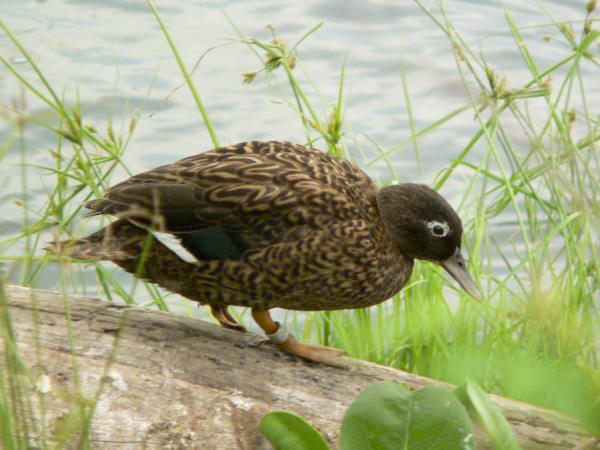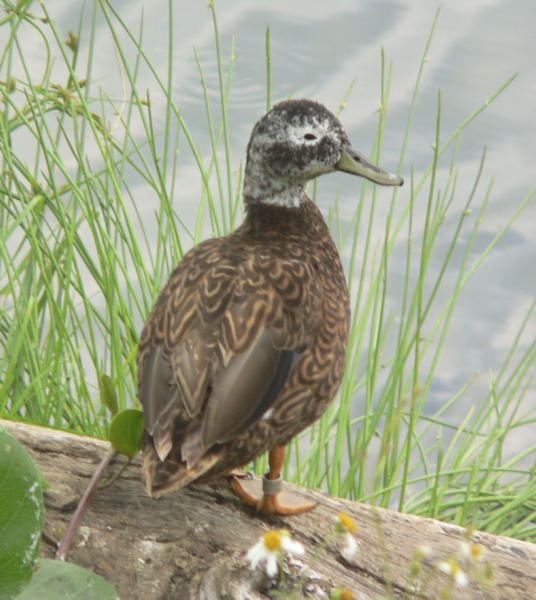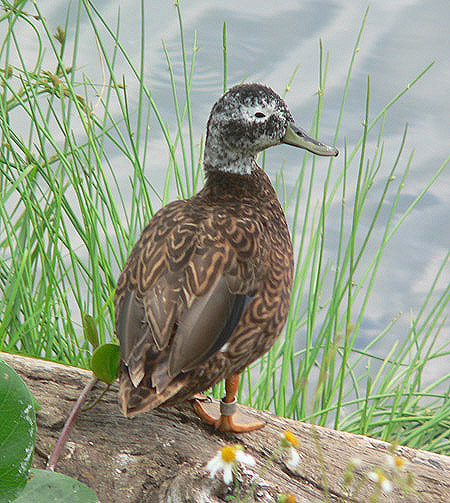Published in the Ocean Watch column, Honolulu Star-Advertiser © Susan Scott
Friday, January 4, 2008
Hawaii has a few native animals so small in number, and so isolated, I resigned myself to never seeing them. Some deep-water fish are in that category, along with several forest birds, a couple of whale species and the Laysan duck.
Then came this trip to Midway, where federal biologists transplanted 20 Laysan ducks from Laysan in 2004, and I wondered if I might get a glimpse of our special little duck after all. They had done well here, I knew, but I still didn’t count on a sighting. When an animal’s population was once down to 12, it seemed best to keep my expectations low.
That was the number of ducks left on Laysan in 1912 after introduced rabbits ate the island’s vegetation practically to bare dirt. At the time, Hawaii’s Northwest Islands had recently been designated a national wildlife refuge. Biologists got to work ridding the island of rabbits, and the duck population began to recover.
Then, in 1993 a drought struck Laysan, and the ducks again crashed, their number dwindling to less than 100. When the drought ended, the ducks, also known as Laysan teal, began recovering, and by 2004 numbered more than 500.
Given tiny Laysan Island’s vulnerability to drought and storms, managers decided to try starting a second wild population somewhere else. They chose rat-free Midway.
Workers dug 12 ponds, into which fresh water seeped, and planted thousands of native plants around them. Finally, after this huge effort by employees and volunteers, the big day arrived. Twenty ducklings went on a two-day boat ride from Laysan to Midway.
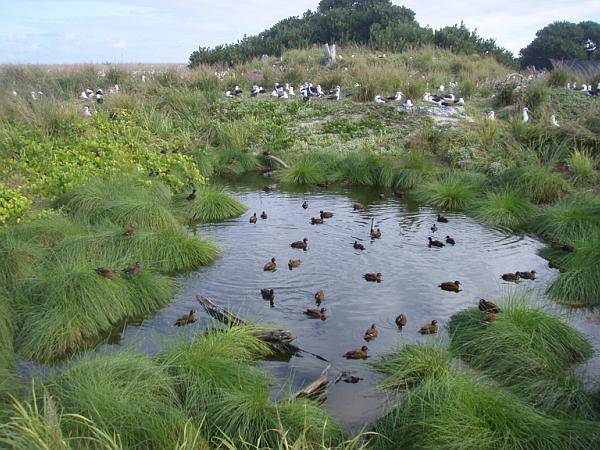
All lived, except for one unlucky male that got too close to a snappy nesting Laysan albatross. It bit the duck on the head and killed it.
Midway suited the ducks. They began nesting and breeding their first year here, and in 2005 biologists transplanted 22 more ducklings from Laysan. More than 200 ducks now live and breed on Midway, some flying back and forth between the two larger islands. The population is large enough that workers have given up trying to keep track of them all.
The insect-eating ducks forage at night, when albatrosses sleep and cockroaches roam. It works well for all but the cockroaches, although, as usual, the roaches seem to be holding their own.
Because of the ducks’ nocturnal habits, small numbers and super-protected status, you would think they’d be hard to see.
Not so. The beautiful little ducks with circles of white feathers around their eyes are curious creatures that come out to investigate any movement around their ponds. And they roam the island at dusk, waddling through fields and around buildings snapping up roaches.
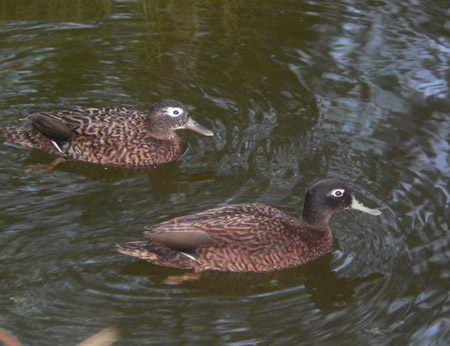
Midways ducks are small as ducks go, with rich brown feathers outlined in black. A splash of green and white is visible on their wing feathers.
The first few I saw gave me chicken skin, and I stopped in awe for long moments. Now, after counting albatrosses for three weeks, when I see a duck, I slow down for a moment of appreciation and then keep walking.
In this era of bad news about endangered wildlife, global warming and marine pollution, Midways successful duck story seems practically a miracle. For me it’s also a dream come true. I’ve seen Laysan ducks.
